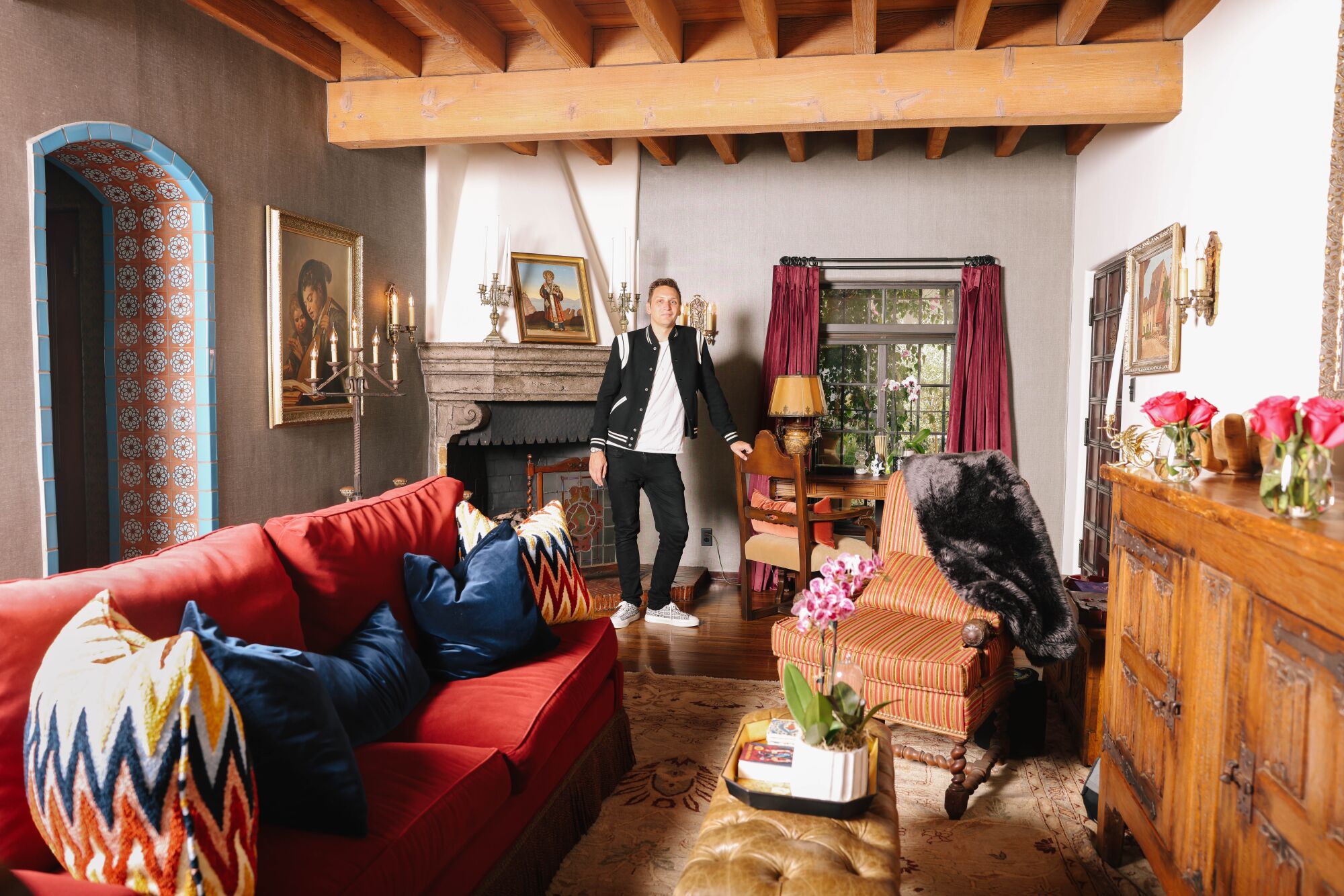For decades, the single-family home has been Southern California’s ultimate lure — a chance to live a life of sun and sand from the comfort of your very own property.
Most buyers’ ticket into that life is the starter home. Something modest but not minuscule. Two bedrooms, maybe three. A picket fence in front and a yard out back for the kids and dog to play.
But the starter home has changed. As home prices have soared and higher mortgage interest rates have made everything less affordable, wish lists have become more and more wishful, and buyers have been forced to find something smaller and less practical.
Want two bedrooms? How about one, plus an office that might fit a twin-size bed. Want a backyard? How about a space shared with the rest of the condo complex. Want to paint the exterior of your townhouse? The homeowner association won’t allow it, but feel free to spruce up the inside.
Making compromises has always been a part of house hunting, but in a market where some two-bedroom homes are selling for $1 million or more — often for hundreds of thousands over the asking price — middle-class buyers are forced to take whatever they can get.

“Anything under $1 million was hard to find,” Zach Zyskowski said. “There was nothing that was both nice and unique, and I wanted something that wasn’t cookie-cutter.”
(Dania Maxwell / Los Angeles Times)
“Beggars can’t be choosers,” said Zach Zyskowski, a TV producer who bought his first home last summer.
His search started with two-bedroom homes in West Hollywood and Mid-City, but he quickly realized that everything was out of his price range.
“Anything under $1 million was hard to find,” he said. “There was nothing that was both nice and unique, and I wanted something that wasn’t cookie-cutter.”
Zyskowski decided to switch strategies. He stopped searching for homes on the market and got creative, asking friends if anyone was planning to sell in their respective condo complexes. He ended up buying a one-bedroom condo directly from a seller in an off-market deal.
In the end, he sacrificed space for character. His new home is in El Cabrillo, a Spanish-style courtyard complex built by movie mogul Cecil B. DeMille in the 1920s.
It’s a bit small at 800 square feet, and he uses a pull-out sofa in the living room to host guests. But the stylish building, which has been featured in shows such as “Hollywood” and “Chuck” and enjoys a spot on the National Register of Historic Places, more than makes up for it.

At 800 square feet, his new home is a bit small, TV producer Zack Zyskowski said, but there’s a pull-out sofa for guests.
(Dania Maxwell / Los Angeles Times)
“Would I have loved something bigger? Yes, there’s always more you can want,” he said. “But I’d rather have something smaller and nicer than bigger and boring. I was just amazed I could buy a place at all.”
For Elena Amador-French, smaller wasn’t an option. A planetary scientist for NASA’s Jet Propulsion Laboratory, she grew tired of working on the Mars Rover from her dining room table during the pandemic. The newborn baby didn’t help.
She and her husband started house hunting last year and set their sights on Altadena, a community tucked into the San Gabriel Mountains filled with charming Craftsman, English Tudor and Colonial Revival-style homes.
With a budget of $800,000, they wanted a house with character — as long as it had two bedrooms. But their search played out like many others: putting in an offer, watching dozens of other buyers drive up the asking price, and seeing the house sell for hundreds of thousands more than they could afford.
“You just have to laugh at a certain point. We couldn’t get upset because we couldn’t even compete,” she said.
They switched strategies and aimed for a duplex, which didn’t have the appeal of the single-family lifestyle but also didn’t have dozens of buyers swarming every open house.
In the end, they paid $970,000 for an 1,800-square-foot duplex with three bedrooms and three bathrooms in an east Pasadena complex.
“There’s still a piece of me that wants a single-family home that I can truly make my own.”
— Elena Amador-French
It didn’t have the charm of a single-family home, and it didn’t quite check off all the boxes; they couldn’t fit a swing set for their daughter into the outdoor space, and they weren’t able to add any personal touches to the exterior because of HOA regulations that require all houses to be painted the same color.
But it was an easier process that ended with more space for less money.
“There’s still a piece of me that wants a single-family home that I can truly make my own,” she said. “But this was so much less of a battle.”
In today’s market, it makes sense to settle. Homes that check all the boxes — hip neighborhood, plenty of space, interesting architecture — are still attracting plenty of offers and often selling for over the asking price. But for buyers willing to let go of the dream of single-family housing and redefine what a starter home can be, there are plenty of options.
Condos are regularly on the market in L.A. in the $300,000 range, a fraction of what some single-family homes are commanding. Other buyers are opting for tenancy-in-common units, arrangements in which residents share ownership of a building.

Zach Zyskowski sacrificed space for character, which he found in a 1920s condo purchased directly from the seller in an off-market deal.
(Dania Maxwell / Los Angeles Times)
As more buyers choose alternatives, condo price increases are outpacing single-family home price increases. In August, the median sale price for L.A. condos was $675,000, a 7.1% jump year over year, according to Redfin. During that same stretch, single-family homes increased 0.4%.
The same is true for townhouse prices, which have increased 6.7% year over year for a median of $700,000.
For many Southern Californians, single-family homes are simply out of reach. The Times has published a “What Money Buys” series for the last five years that highlights homes on the market at certain price points in different neighborhoods. Now, those stories read like a time capsule.
For example, a 2019 piece featured homes on the market for $800,000 in a handful of L.A. neighborhoods including Jefferson Park and Cypress Park. Both areas had a five-bedroom home listed for around $800,000.
The Jefferson Park home ended up selling for $850,000 in 2019. Now, Redfin estimates that the home is worth $1.28 million. The Cypress Park home grew even more valuable, selling for $800,000 in 2019 and now worth an estimated $1.45 million.
Those prices have become standard. In Jefferson Park, there are no five-bedroom single-family homes on the market for less than $1.2 million. The $800,000 price point now buys a two-bedroom home — or a three-bedroom fixer-upper.
The change becomes even more pronounced at lower price points. A 2017 entry in the series explored what $500,000 buys in the L.A. neighborhoods of Van Nuys, Leimert Park and Boyle Heights. Every single home on the list had at least 1,000 square feet, and most had three bedrooms. One had four.
Five years later, Redfin values all the properties on that list at $750,000 or more, with a few valued north of $850,000.
A look at the options currently on the market in those three communities finds no three-bedroom homes for $500,000 or less. The closest thing is a three-bedroom townhouse in Van Nuys asking $550,000 — cash offers only.
For comparison, a 2022 story exploring homes at $500,000 highlighted much smaller options including a 648-square-foot bungalow in East L.A. listed at $485,000 and a one-bedroom condo in downtown L.A. asking $509,000 (plus $813 in monthly HOA dues.)
Spoiler alert: Both homes sold shortly after the article ran, and the East L.A. bungalow sold for $10,000 more than the asking price.
More buyers are settling for two-bedroom homes as a starter, and it’s driving up prices.
In L.A., the median two-bedroom home — the typical size for starter homes — sold for $765,700 in August, a 10.1% increase year over year, according to Rocket Homes. That outpaces one-bedroom homes, which increased 8.8% year over year, and three-bedroom homes, which increased 9.1% year over year.
Earlier this year, Compass agent Allie Altschuler sold a two-bedroom home in the hills of Eagle Rock for $1.442 million — or $293,000 more than the asking price. What it lacked in bedroom count, it made up for with unique features such as a breakfast nook with a built-in booth and a separate structure in the backyard that can be used as an office or studio.
“Younger buyers are OK with buying smaller homes because they know they won’t be in it forever,” she said. “Buying a house and living in it for 30 or 40 years isn’t the case anymore.”
